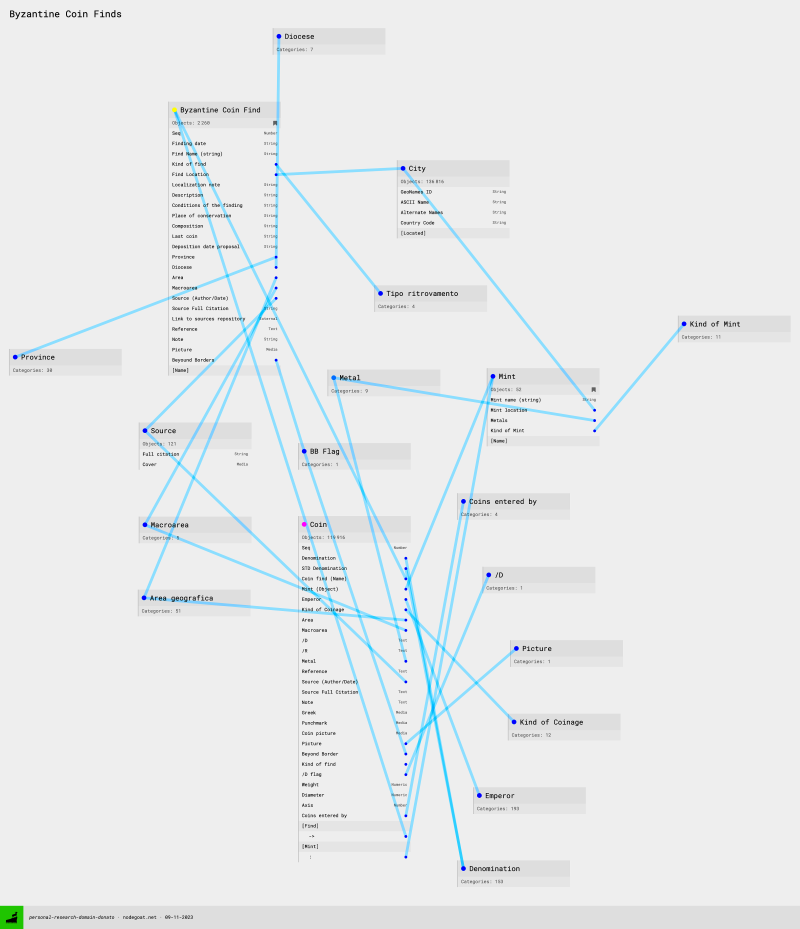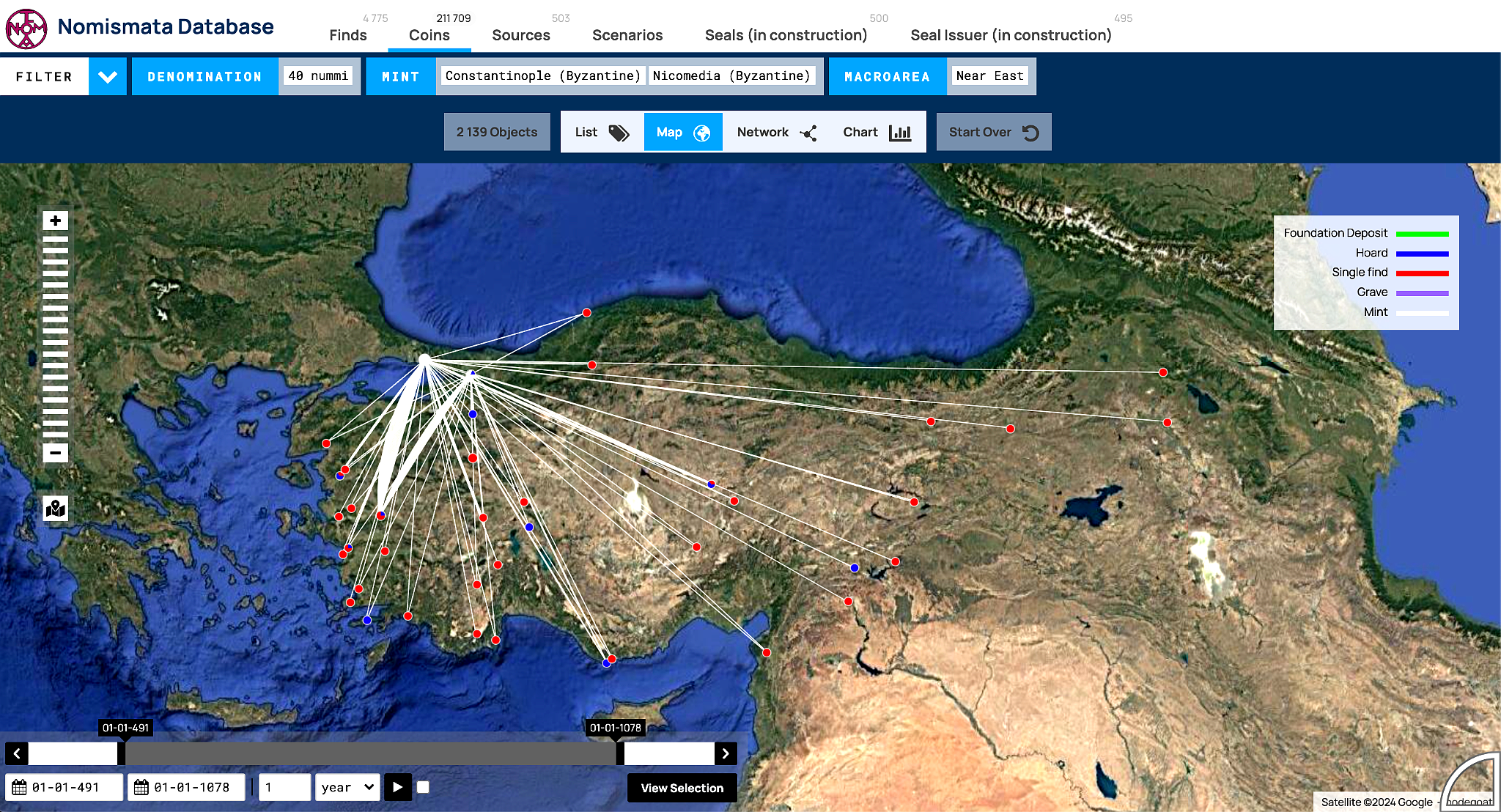

At the foundation of Nomismata lies a carefully structured data model, which defines the types of data contained in the database and the relationships between them. Rather than inventing a new framework from scratch, the model was shaped by a thorough analysis of existing literature, ensuring that the database was structured around and built upon the sources that inform it.
The examination of scholarly works identified the key objects that needed to be represented in Nomismata:
A fifth object, CITY, was added to account for the georeferencing of both mints and coin finds, allowing for spatial analysis.
Organizing the data from historical sources in a logical and structured way was one of the most creative aspects of building Nomismata. The result was a network-based data model where objects are interconnected through defined relationships.
In the data model, the blue lines connecting object attributes to categories or other objects visually represent the relationships that structure the database. This approach reflects the interconnected nature of numismatic data, allowing researchers to analyze patterns over time and space.
Each attribute can serve as a search filter, making the database highly flexible for research. By combining attributes, users can refine their queries to extract precise historical and geographical insights.
Example search query:
“Show me all the 40 nummi minted in Constantinople and Nicomedia that were found in the Near East.”
By integrating structured data, georeferencing, and network visualization, Nomismata provides a powerful research tool for exploring the historical circulation of coins.



